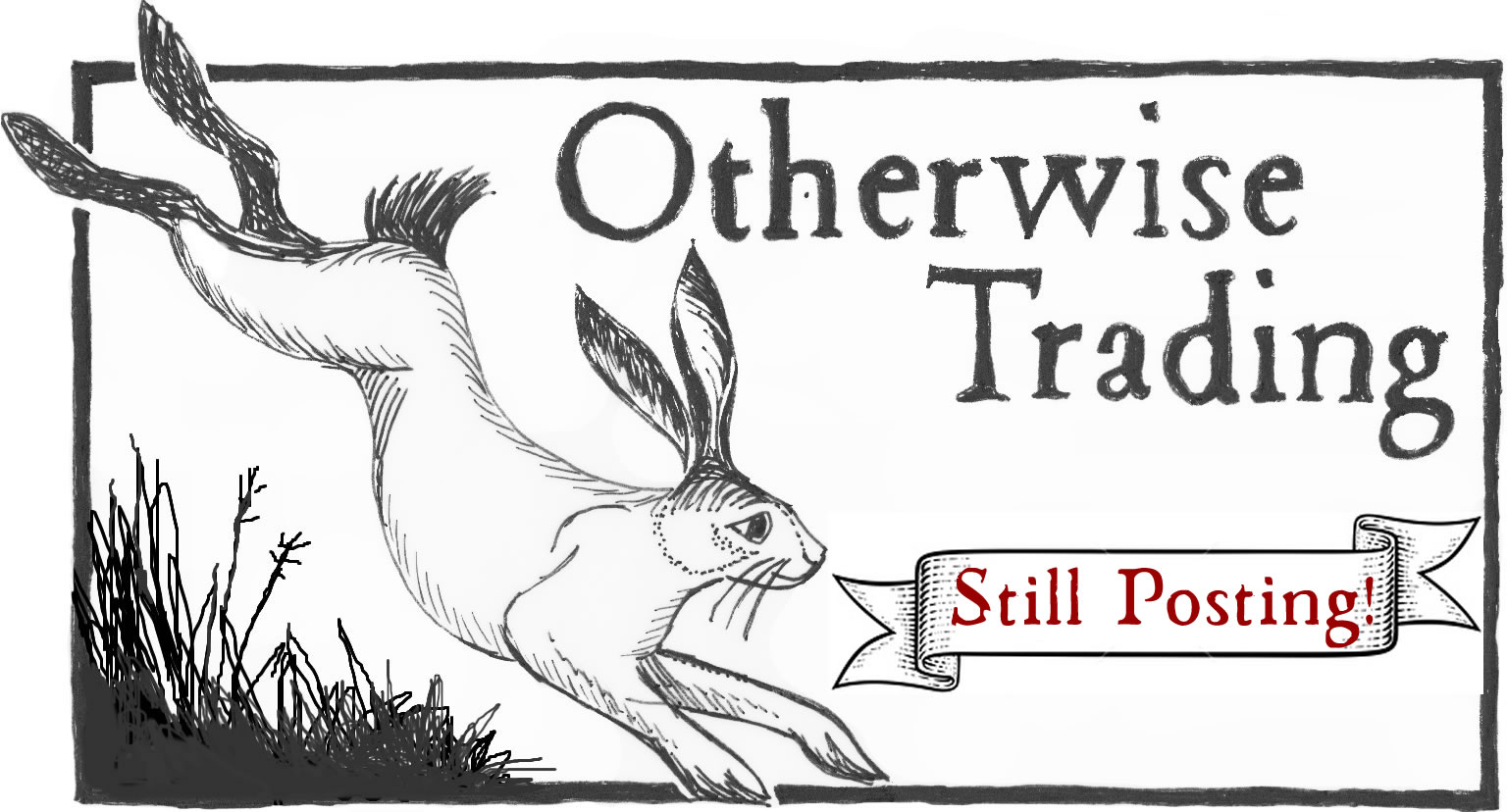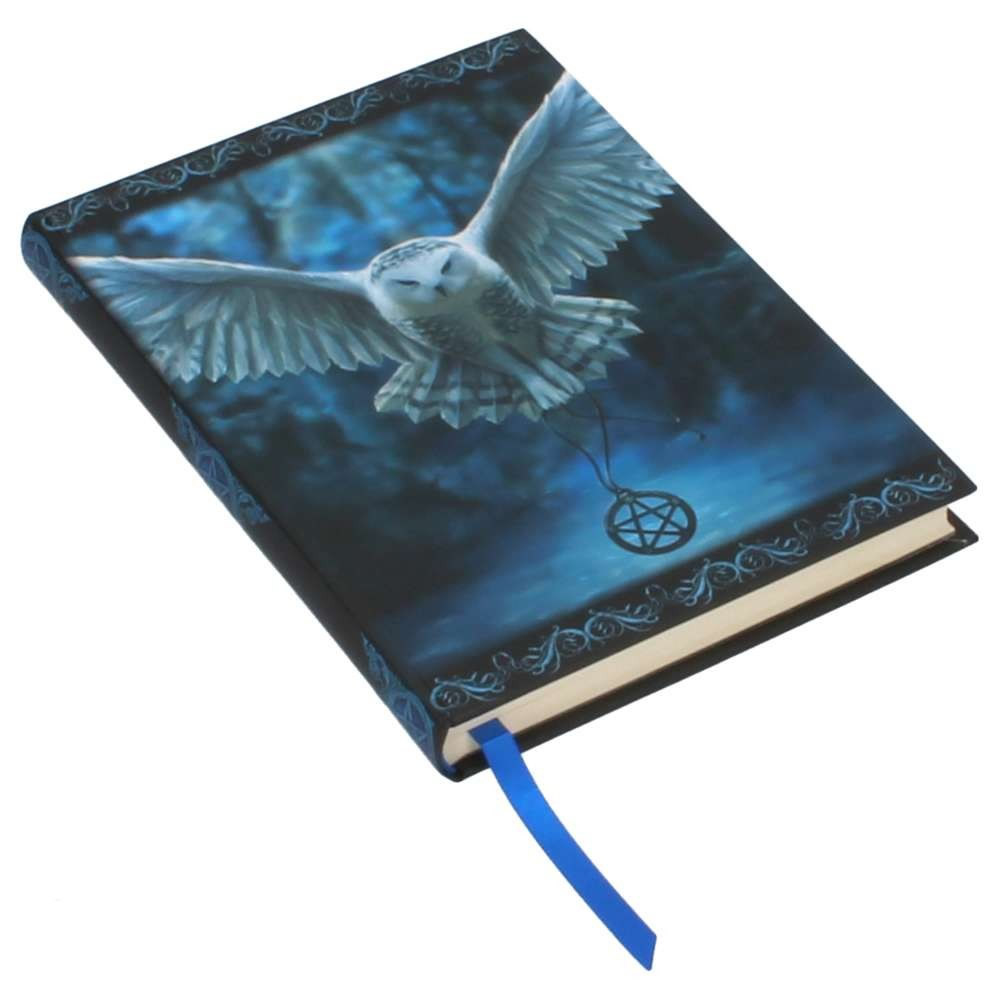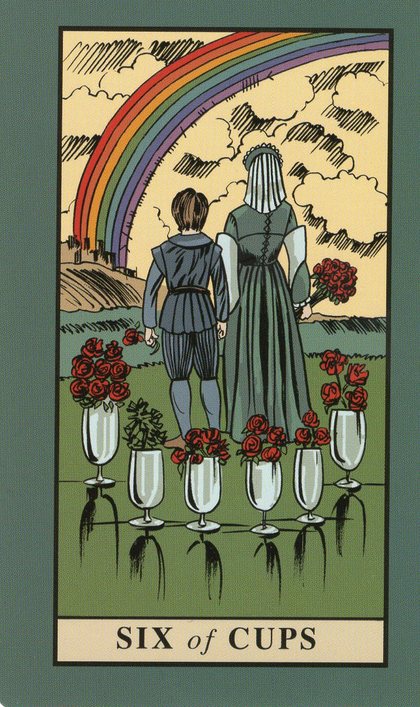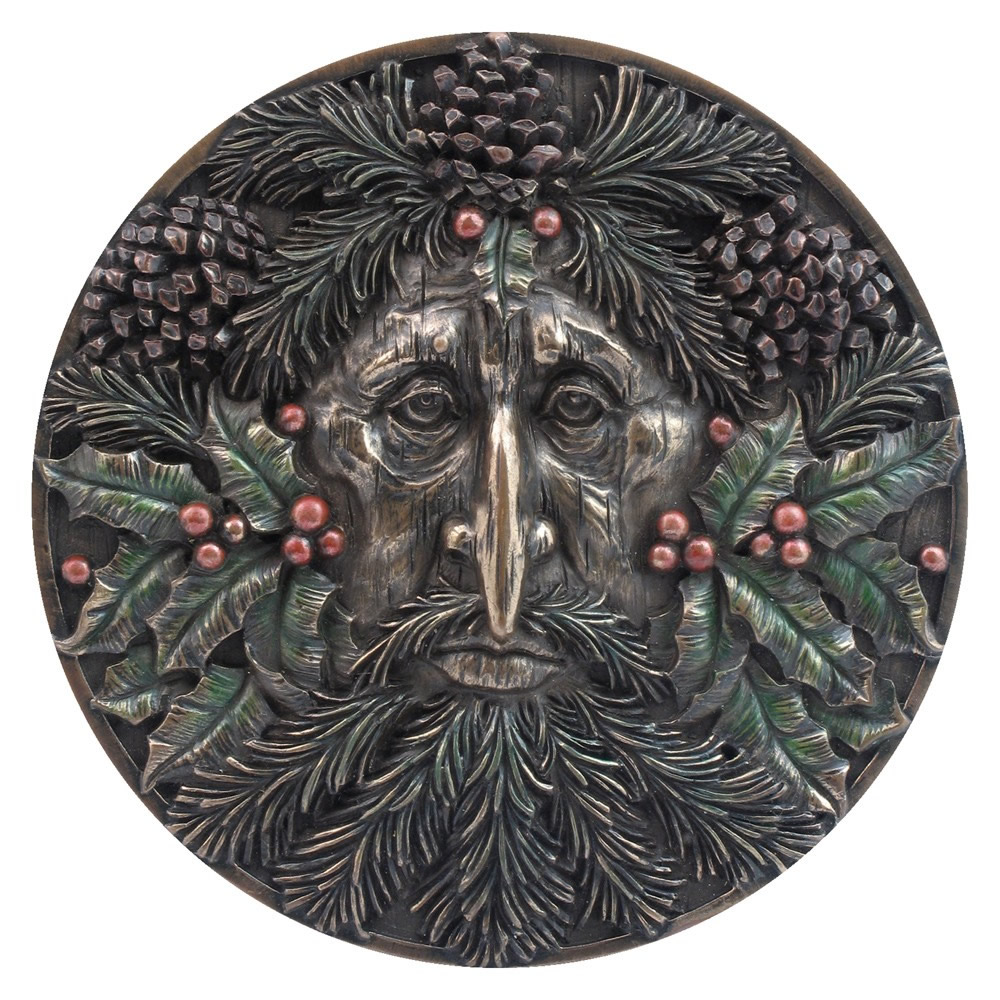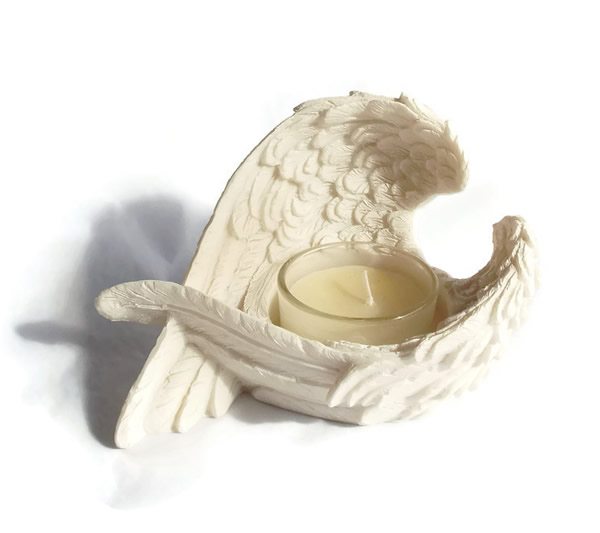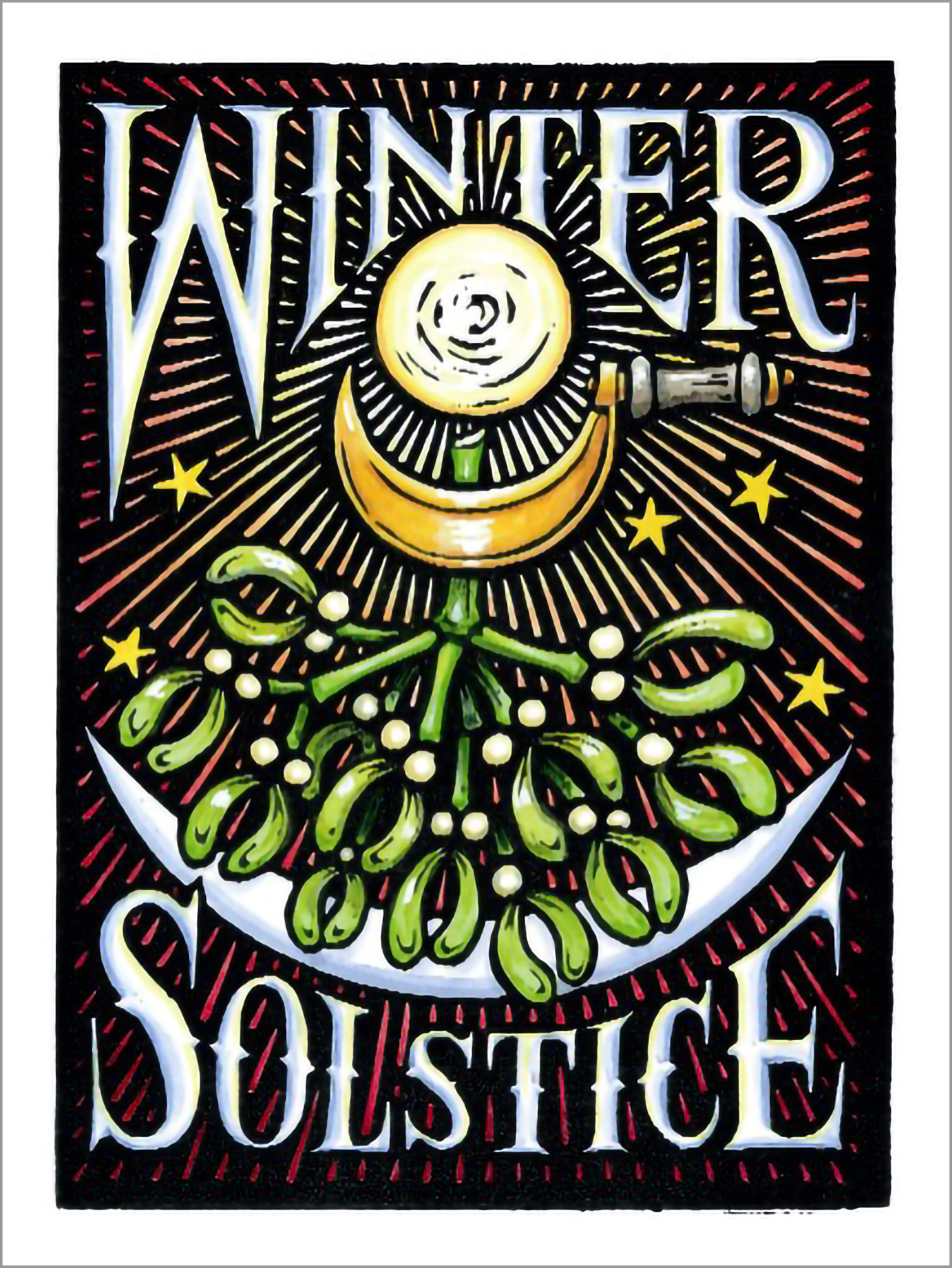
Winter Solstice Greetings Card by Karen Cater
£1.90
A beautiful card that references the tradition of cutting mistletoe for the Winter solstice.
This card comes cellophane wrapped and has a yellow envelope.
It measures 6" x 4" (15cm x 10.5cm).
It's blank inside for you to write your own message.
"The Goddess gives birth to a son, the God, at Yule. This is in no way an adaptation of Christianity. The Winter Solstice has long been viewed as a time of divine births. Mithras was said to have been born at this time. The Christians simply adopted it for their use in 273 CE (current era)."
"Wicca - A guide for the Solitary Practicioner", Scott Cunningham
The Winter Solstice has long been understood as a time for rebirth, when life emerges from the darkest depths of winter. Its symbols are evergreens, holly, the yule log and the spinning wheel.
Deities celebrated at this time are newborn gods and the triple goddess in her aspect as Mother.
Associated colours are red, green and white, and appropriate herbs are holly, mistletoe, ivy, cedar, bay, juniper, rosemary, frankincense, myrrh, sandalwood, and pine. Offerings can be apples, oranges, nutmegs, lemons, pinecones, oak leaves, and/or whole cinnamon sticks.
Yule is a time of the greatest darkness and is the shortest day of the year. Earlier peoples noticed such phenomena and petitioned the forces of nature to lengthen the days and shorten the nights.
After the Norse brought Yule into prominence it nearly replaced Samhain as the date of the New Year, and many modern Celtic adherents still honor Yule this way. The Nordic-influenced Celts celebrated Yule with many of the trappings we associate with modern Christmas observances; decorated evergreen trees, wreaths, holly, mistletoe, feasting, and dancing. They also believed that on this night the Holly King, as the God of the waning year, would battle the Oak King, the God of the waxing year, and lose.
| Size: | 6 inches x 4 inches (15cm x 10.5cm) |
|---|---|
| Colors | As pictured |
| Material | Printed card |
